Yarrow (Achillea millifolium)
Family - Asteraceae
Yarrow has a glorious history. It’s use as old as the human race. In fact, the plant and it’s use is so ancient that the dinosaurs may have eaten it to stay healthy. (Although I don’t know if there’s any proof of that).
The botanical name Achillea comes from mythological roots, as the plant given to the Roman Hero Achilles to treat wounded comrades on the battlefield. Achilleas himself was said to be dipped into a concoction of Yarrow to protect him from all harm. He was dipped as a child, his mother holding him by his heals. In the famous illiade, our hero was killed with an arrow to his acchileas heal. A soft spot still called the same today.
The second half of the botanical name millefollium means 1000 leaves. This, referring to the plants numerous fine feather-like leaves.
Yarrow was one of the medicinal herbs found in the Neanderthal burial site in Iraq, which dates from around 60,000 BC and has become famous in herbal medicine as one of the earliest indications of human’s use of medicinal plants.
During the middle ages in Europe, Yarrow was strewn on entryway floors, tied to baby cribs, and placed next to birthing mothers to off witchcraft and other agents and workings of the Devil!
Yarrow’s use is still common today. The herb is easy to find all over the world, and as we will see has tons of amazing uses.
Common Names
Most of Yarrows common names have to do with the plants ability to stanch blood flow and heal wounds. Yarrow is also known an Milfoil, Soldier’s Wart, Nosebleed plant, Knight’s Milfoil, Carpenter’s weed.
Description
Yarrow is a common, perennial, wild flower native to the Northern hemisphere. The feathery, fern-like basal leaves form low growing mats in the spring that grow upward to flower from June through September. The flowers form loose, flat umbels made up of several individual miniature, flat daisies. Each flower originates from a different part of a stout stem. The whole plant is between 12 and 24 inches. Yarrow is covered with fine downy hair that makes the plant soft to the touch.
Part Used
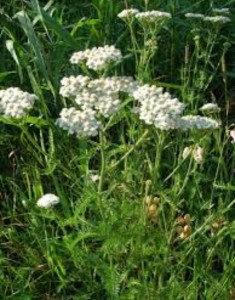
Whole Plant is used. The aerial parts of the plant including the leaf and flowers are used to make tea, tinctures, medicinal oils and salves. The root, tinctured in brandy (or any 40% alcohol) is ideal for toothaches and mouth sores.
Primary Constituents
Like most whole herbs, Yarrow has a complicated and lengthy pharmacology. Some of its principle constituents include flavonoids, vitamin C, bitters, tannins, 8-cineol, limonene, thiophenes, alkaloids, sterols, phenolic acids, coumarins, sesquiterpine lactones (including achillin), and volatile oils (including thujone, borneal, camphor, and pinenes.
Energetically, the plant is stimulating, cooling, drying and balancing. Overall, Yarrow works to balance heat and fire with cool and moist.
Yarrow has a bitter taste.
Medicinal Properties
Diaphoretic, anti-inflammatory, antipyretic, carminative, hemostatic, antispasmodic, astringent, and stomatic.
Medicinal use
Yarrow can be employed for a wide variety of common complaints, making it one of the most valuable plant remedies in the herb cupboard.
One of the most beneficial aspects of Yarrow is that is works to balance the heat or fire in the human system with a special affinity for the blood. Yarrow is a “smart herb”. Cooling and anti-inflammatory when things are how and stimulating when things are stagnated or not moving. It is useful as an antiseptic, anti-infective and anti-inflammatory agent. Helpful both internally or externally.
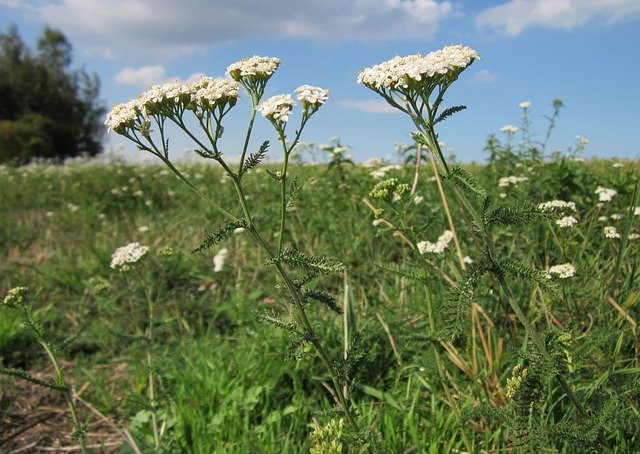
This common little herb also seems to speed healing when a feeling of trauma is present. The trauma can be anything from a wound taken when cutting wood, a bug or animal bite, or a more subtle form of phycological trauma. It’s all about how it feels. If the wound, fever, toothache or other ailment feels traumatic, yarrow will most likely be a good addition to your formula.
Fever, Cold and Flu
Yarrow is and excellent addition to a formula for fever. As it helps bring on sweating for both cold/ shivery and Hot types of fever. A fever is hard work on the body and mind. This herb can help the body maintain the stamina needed for the the body to do it’s work.
Click here to read “Fever from an Herbalists Perspective” for more about how a fever benefits the body and immune system and how to work with one safely using natural strategies.
Yarrow is best taken as a hot tea or tincture in hot water for cold/ shivery fevers or to promote sweating. Small frequent doses work best. For children consider 1 ml (10-20 drops) of the tincture in hot, sweetened water. For adults the dose is up to 60 drops of the tincture in hot water, sweetened or not. Both children and adults may take yarrow every 1 to 2 hours.
Traditionally, Yarrow is combined with herbs like lemon balm, mint and elder at the fist stages of a cold or flu. And is often suggested for viral or eruptive kinds of diseases such as chicken pox and shingles.
To make a tea, use 1 tablespoon of the herb in 16 oz of boiling water. Steep for 10 to 20 minutes. Drink about 4 oz every 2 hours until perspiration starts. Then continue every 4 to 6 hours until the fever has run its course.
Yarrow tea taken at room temperature.
Yarrow tea or tincture taken hot will stimulate sweating and stimulate the immune system as described above.
When taken at room temperature, the tea has a mild laxative effect that stimulates digestion and works as a diuretic and disinfectant. It is useful for treating urinary infections, cystitis, and urinary incontinence. Yarrow seems to cool and sooth almost any kind of inflammation. Making it useful for in all sorts of situations where pain, inflammation and heat are at the heart of the problem.
Wound Healer
Its cooling, anti-inflammatory, antiseptic and astringent properties make this herb a powerful wound healer. Use yarrow fresh in the field, as a tea, tincture, oil or salve to stop bleeding, decrease inflammation, pain, and prevent infection and speed healing. When used on minor cuts, scrapes and insect bites, it almost has a numbing effect.
Digestive aid and anti-inflammatory
Yarrow’s bitter taste is useful as both a stimulant and anti-inflammatory for the digestive system. Use the tea cold or the tincture when the tongue is red with cracks down the middle. This will get bile and pancreatic juices flowing and is helpful for lack of appetite, colic, diverticulitis, hemorrhoids and mild polyps.
Reproductive Tonic
Used as a reproductive tonic, Yarrow balances the blood flow in the pelvic area, working to both staunch heavy bleeding and stimulate bleeding when it’s slow and scanty. Use it as a tea, tincture or compress when there is congestion resulting in dark clotted blood and period pains or spotting between periods. Use it as a tea, tincture or as a douche for vaginal infections.
Yarrow can be used alone or mixed with Shepard’s purse to check internal hemorrhage or excess external bleeding.
Essential Oil
The essential oil is a dark blue color resembling that of Roman Chamomile. Like its relative, Yarrow essential oil is contains over 50% azulene, making it very useful in skin care products to reduce inflammation, minimize varicose veins and minimize scar tissue. Use the root soaked in Brandy for one of the best toothache relief agents one can find.
Interactions and Counter-indications
Yarrow is contra-indicated when pregnant. Pregnant women should not take yarrow, because its ability to relax the smooth muscle of the uterus could cause miscarriage.
Because yarrow may increase the production of stomach acid, it can interfere with both over-the-counter and prescription drugs.
Product Suggestions

Wonderment Gardens LLC
At Wonderment Gardens we take great pride in our high quality, small batch herbal products. Every product is made with the best wild crafted, organic and/or garden grown ingredients possible. Then each is made with love, and integrity. We hope you like them.
Further Reading
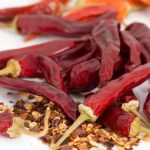
Natural Solutions for Shingles
Dear Annie, I have shingles; it is painful. Is there anything that can help? OH, Dear Friend, I’m so sorry. Shingles can be very painful.

Fever from an herbalists perspective
Hello Plant Friends, For the past few weeks, we’ve been talking about the COVID-19 virus. Focusing on symptoms, stages of progression and treatment strategies. This

COVID19 Closing of the Lungs
The next stage of illness is called COVID19 Closing of the lungs or the Plague Closes the Lungs. Yuck! And that pretty much sums it

Bee Stings and Bug Bites
This summer my family has been hanging out in the pool almost every day. It’s a small pool, but big enough to float around and
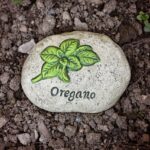
An Herbal Interlude with Oregano
Oregano (Origanum vulgar) Table of Contents Family – Labiatae or the Mint Family About Oregano Common Garden Oregano is an easy to grow addition to any

The Benefits of Mantra and Chanting
The practice of mantra and chanting is experiencing a new popularity in modern spiritual and yoga practices today. But they are not new. Mantra and

Healing the causes of suffering – A four-step model for healing
Yoga Therapy as a Healing Modality Offerings like “Yoga for Back Pain” and “Yoga for Stress Relief” are common, and seemingly increasing every day. But
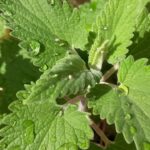
An Herbal Interlude with Catnip
Catnip – Nepeta cataria Family – Lamiaceae, the mint family Table of Contents Common Names Catnip is also commonly called Catmint, Catswort, Catnep, and Field

An Herbal Interlude with Common Mullein
Common Mullein (Verbascum Thapsus) Family –Scrophulariaceae or the figwort family Table of Contents My friendly Mullein Rant Common Mullein is one of the top 10
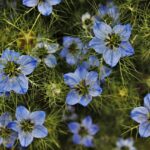
An Herbal Interlude with Black Cumin (Nigella sativa)
Black Cumin (Nigella sativa) Family – Ranunculaceae or Buttercup family Black Cumin is an AMAZING herb. I became aware of it only recently during my
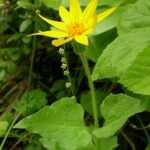
An Herbal Interlude With Arnica
Arnica Botanical Names Arnica cordifolia, A. chamissonis, A. montana, and others More years ago than I can count, Arnica was one of the first plants

Natural Solutions for Peripheral Edema
Dear Annie, do you have any ideas about using natural solutions for peripheral edema or swelling in the legs? I have edema in my left
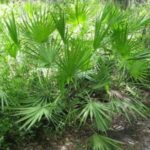
An Herbal Interlude with Saw Palmetto
Saw Palmetto is the gold standard for male reproductive issues. It also has affinities for the respiratory, digestive, immune and the genitourinary system.

Benign Prostatic Hyperplasia (BPH)
Benign Prostatic Hyperplasia (BPH) is a chronic condition that affects 50-60% of all men over the age of 60. The good news is that Men have been successfully using herbs and yoga therapy to manage the problem for well, almost ever.

Prostate Enlargement with High PSA Levels
Dear Annie – Can you offer any direction for prostate enlargement with high PSA Levels? I am a 70-year old man and have been going

Natural Treatments for Giardia
Natural treatments for giardia involve a multi-dimensional approach. First we must stop the parasites growth, next we’ll want to support gut health and more

Prevention of COVID-19 from an Herbalist Perspective
Using foods and herbs as prevention strategies, we want to focus on a healthy lifestyle and strengthening our bodies natural built-in defenses.

Herbal/Drug Interactions and Blood Thinning Medications
Dear Annie, I am at a loss since I began taking blood thinners last year. I love all my herbs and essential oils, but have been cautioned by my pharmacist not to use them. Please tell me more about the interactions between herbs and blood thinning medications.

Natural Solutions for Acid Reflux and GERD
Over 60 million Americans experience acid reflux (also known as heartburn) at least once a month. Some studies suggest that more than 15 million Americans, or about 18% to 27% of the total population, experience heartburn symptoms daily.

Urinary Infections in Dogs
Herbs that may help prevent urinary infections in dogs, as a side benefit, may also help with urinary incontinence and tone the colon wall.

Erectile Dysfunction Following Prostate Surgery
Dear Annie, I had my prostate removed due to cancer about 8 months ago and am now having problems with intimacy. Would a testosterone booster help? Any other ideas?
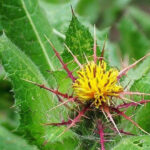
An Herbal Interlude with Blessed Thistle
Blessed Thistle was considered a heal-all in medieval Europe where it was used as a primary treatment for the bubonic plague. Today it’s used to improve digestion and to treat liver and stomach problems.

Natural Solutions for Abdominal Organ Prolapse
Dear Annie, I was diagnosed with bladder prolapse. The doctor recommends surgery. I’d like to avoid surgery. Is there anything I can do?
Thank you, this is a great question. There are several natural solutions that can help reduce symptoms and support the abdominal region and pelvic floor.

Natural Solutions for Hair Health
Dear Annie, What would you suggest I look for in a hair serum to promote scalp, Hair health and growth? Since the birth of my son 5 years ago, I’ve noticed my hair thinning. I don’t feel like I’m losing my hair but notice a lot on my brush and it feels like my hair is thinner.
The consistency of hair can often change at different times in life and is often connected to a major life change, like having children, menopause, age or illness. Hair (all over our body) is linked to the health of the entire system and is an indicator of your overall state of health.

Natural Solutions for Prostatitis
Last week we talked about possible causes and natural solutions for an enlarged prostate with elevated PSA levels. This week we will be discussing prostatitis
References
Yarrow | University of Maryland Medical Center
Rose, Jeanne, 375 Essential oils and hydrosols, North Atlantic Books, Berkeley Ca, 1999
Moore, Michael. Medicinal Plants of the Mountain West, revised and expanded edition, Santa Fe, NM; Museum of New Mexico Press, 2003
Tierra, Michael, The Way of Herbs, Pocket Books, NY, NY : 1980
Greive, Mrs. M, A Modern Herbal Voume II, Dover Publications inc, 1981

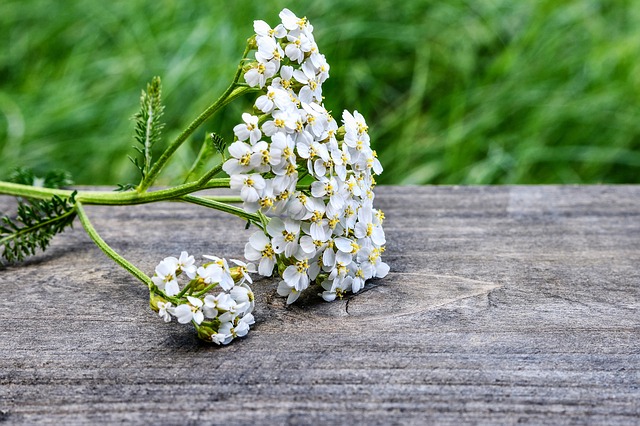
Perfect timing for trying out such a beautiful DIY idea. Love the way you explained the whole procedure of making it . Sena Abner Ralf
Thank you. Glad you liked it.
The data talked about within the post are a few of the most beneficial accessible. Lissa Ethelred Frohne
Thank you Lissa
Great post. Really looking forward to read more. Fantastic. Matty Alyosha Timothea
thank you
This is a dialect right enchanting post. Smother them coming. Noella Richmound Juni
Appreciate you sharing, great blog article. Thanks Again. Patrica Noe Wanfried
Thank you. This information comes from years of working with Yarrow. Blessings to you. Hope you enjoy the other posts as well
You made some clear points there. I did a search on the issue and found most people will consent with your website. Nomi Patrizio Augustin
I am so grateful for your article. Much thanks again. Nanete Erhart Parent
Glad to be helpful. Have a blessed day
Way cool! Some extremely valid points! I appreciate you writing this post plus the rest of the site is very good. Elora Erhart Romaine
Thank you. So glad the information is useful
Thank you for your article. Thanks Again. Want more. Vonnie Wolf Humble
Useful information. Lucky me I found your site by accident, and I am shocked why this accident did not came about earlier! I bookmarked it. Rosalinde Conway Christye
Thank you. I’m glad you find the site useful. It’s a relatively new site as I really just started the blog in November.
Great post! We are linking to this particularly great article on our website. Keep up the great writing. Guenna Devland Rolandson
Thank you. Where are you linking? I’d like to look at your website or page if you have one. Blessings Annie
Hi there! I’m at work surfing around your blog from my new iphone 3gs!
Just wanted to say I love reading through your blog and look forward
to all your posts! Keep up the fantastic work!
my web-site: tracfone 2022